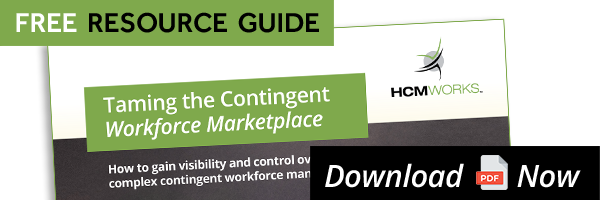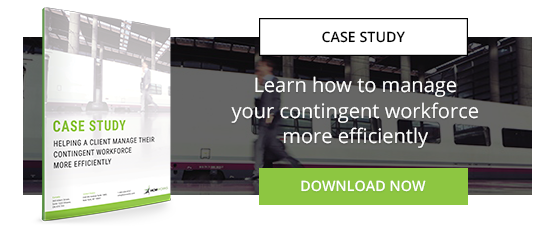Hiring contingent workers from a staffing agency can help your company save time, find the best talent, and reduce costs - but what exactly are you paying for when you engage the services of a staffing agency?
Here’s what you need to know about the three interrelated, yet often competing aspects of contingent labor spend. Agencies will always try to have the lowest pay rate and the highest bill rate so they can make a higher profit with the markup. Staffing agency rates don’t have to be a mystery:
Hourly Pay Rate
This rate is the hourly amount the staffing agency is paying the contingent worker for the services he or she will be providing to your company. It’s the largest aspect of the bill rate. It also plays a significant role in the quality of the talent you’ll ultimately receive, the retention rate, and the time it will take to fill a position.
Generally, the higher this rate is, the more qualified the worker will be, the higher the likelihood the worker will be happy and stay at the job, and the quicker you’ll be able to find a suitable candidate to hire. Changes to this rate will affect the quality of the talent, so your description of the type of worker you want and what they will do is important to get right here.
Percentage Markup
When you hire through a staffing agency, you not only spend money on the pay rate but also on the firm’s percentage markup. This is a percentage applied on top of the pay rate and, if the contingent worker is employed directly by the staffing agency, it typically includes pass-through costs, such as employment taxes, workers’ compensation and insurance. Whether the worker is an independent contractor or directly employed by the staffing firm, a large component of the markup will be the gross profit for the staffing agency.
You’ll see great variation in markups, which is based on market demand and conditions, assignment duration, type of workers and skill sets, business volumes and more. Usually, markup rates range between 20-40 percent and can go as low as fifteen percent, in rare cases, to as high as 50 percent or more. Fluctuations to this cost are commonplace and should theoretically be based on current economics only. However, staffing agencies are not shy to keep their margin high when they are not challenged, so here is your opportunity to negotiate the best rate.
Bill Rate
Finally, the bill rate is the combination of the two above components. This is the full amount that you’ll ultimately end up paying for the staffing agency’s services and the contingent worker’s services.
So here's the process to follow.
Before contacting a staffing agency, get to understand the cost of the type of worker you’re looking for and provide a proposed bill rate to the firm to ensure you’re spending an appropriate amount for the talent you’ll be receiving.
Take a closer look at markups before you get into a relationship with a specific staffing agency—get quotes and shop around before signing a contract.
The staffing agency recruits candidates and provides you with options for new temporary hires that match the qualifications, skills, and experience that you’re seeking for any given project, but this comes with a markup.
You must pay the firm a markup for its services on top of paying for the worker’s services. The more you can negotiate that markup, the better you're in control to lower your costs.
Though the markup and the final bill prices will vary depending on the firm and the talent you’re looking for, the concept of how the prices are determined is the same across the industry.
By understanding the three different components of your contingent labor spend, you can better control your costs and make more informed hiring decisions. And of course, if you need help to manage your staffing agency negotiations to control your costs, a contingent labor workforce advisory service like the one provided by us here at HCMWorks, could be very beneficial to you.
About HCMWorks
We are a contingent workforce service provider helping organizations gain better access to talent through the use of independent contractors, consultants, temporary workers, freelancers and other non-payrolled employees. We provide the expertise, the technology, and processes to help you reduce your workforce costs, mitigate against misclassification and co-employment risks, and increase the efficiency and timeliness of your contingent recruitment process. Read more about what our clients say about us here.




